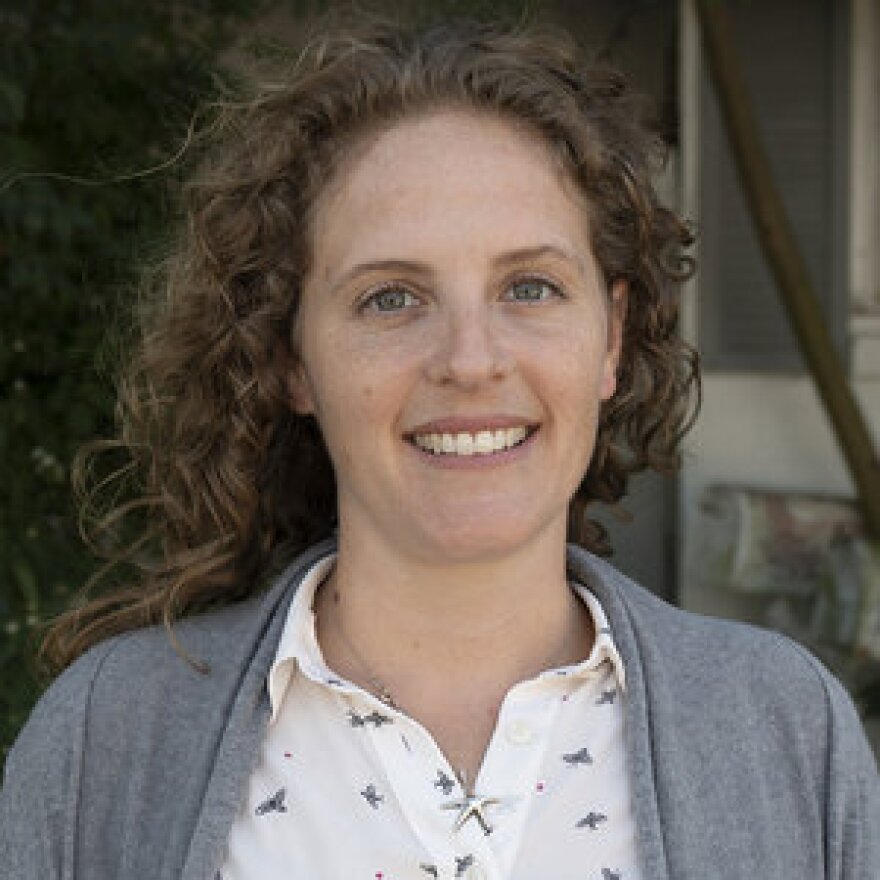Amanda Williams cranks up the motor on her boat before heading out on the Indian River into Warwick Cove just east of Millsboro.
"This river is where I was raised. To me, it’s not just a river, it's a friend and a life force for me," she said.
That’s why she says it was so meaningful to take part in an effort to protect marine life in that area.

In mid-January, Delaware Sea Grant and the University of Delaware worked with volunteers to round up derelict crab pots - or traps - left at the bottom of the river by recreational crabbers. Sea Grant coastal ecology specialist Kate Fleming organizes the effort.
The problem Fleming says is that the pots left behind - are now what she calls “ghost fishing.”
"They catch animals because they’re not being tended - those animals, when they can’t escape, they’ll die and so it does just lead to needless mortality," she said.
On the day of this round-up, teams of UD Researchers and volunteers head out on the water with their own unique jobs. The UD teams use sonar and consumer-grade “fish finders” to locate pots beneath the river’s surface. Jen Repp is one of the graduate students leading that effort.

"We actually have two different sonar systems that we’re using at the same time and that helps us get a little bit more precision and a little bit more efficiency," she said. "But it’s definitely challenging, it takes people who have done it before and are familiar with the technology as well as being on a boat."
Tossing a grappling hook into the water, they pull the pots up to mark their locations before releasing them back into the water for volunteers to haul away.
Fleming says there are more pots out there than they can retrieve.
"In the Indian river area here, I actually haven’t seen the mapping results to know what those densities are, but we’re finding in these creeks and coves hundreds and hundreds of derelict crab pots. When you add them up across the entirety of the inland bays, that amounts to thousands of crab pots that are out there," Fleming said.

Volunteers say the effort is worth it - even if it’s hard work - especially for those hauling the mud and debris-filled pots out of the water.
Volunteer Ed Martin said maintaining the area’s ecosystem is crucial for his boat-ad business and others that rely on the tourism economy.
"Our area, I don't care how many outlets or houses they build - it all bases off the water and the beach and the cleaner our beaches are, the waters are, the happier people are going to be," he said.
At the end of the day, the crews located - and volunteers removed - a total of 64 pots.
Back on the dock, volunteers and staff with the Center for Inland Bays processed the pots coming in from the water. They clean them, analyze their contents and check for any living creatures. They’re particularly glad to see that no diamondback terrapin, an aquatic turtle, got caught in the traps.
Nivette Pérez-Pérez of the Center for Inland Bays says they’re an “iconic species.”

"They have an important role in maintaining the balance in the marshes. They feed on the snails that eat the marshes. So them consuming the snails keeps the population down and gives opportunity for the marshes to keep thriving and growing," she said.
Marine scientists working the roundup hope the crab pot roundup keeps thriving as well. This is its third year. It started as a pilot project and a grant from the NOAA Marine Debris program kept it going past two years. Kate Fleming’s goal is to seek funding to make the effort self-sustaining. Ultimately, she said she'd like to find the funding to distribute consumer-grade fish finders to volunteers and train them to use them.
Fleming says she gets a lot out of the experience - and based on the energy volunteers bring to the effort, she thinks others do as well.
"It feels productive, I think people like being part of this project and so do I because it’s so tangible. It’s this very specific problem that we can all understand and see and then feel like we can do something about it," she said.
UD researchers now plan to take some of the data collected during the roundup to determine how derelict crab pots impact the crab fishery as a whole.




